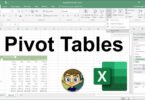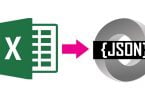Download free Excel Macro : Change Chart Type
Macros are one of the most powerful features in Excel. They are small programs that can automate tasks and save you a lot of time.
If you are not familiar with macros, they can seem a bit daunting. But once you learn how to use them, you will wonder how you ever managed without them!
In this article, we will show you how to use the Macro "Change Chart Type" in Excel. We will also provide some examples of how macros can be used to automate tasks.
How to use Macros in Excel?
Macros are written in a programming language called Visual Basic for Applications (VBA). VBA is a simple language that is easy to learn.
You do not need to be a programmer to use macros. However, if you are familiar with programming, you can use VBA to create more complex macros.
There are two ways to use macros in Excel:
1. Use a macro that is already written.
2. Write your own macro.
For both methods check out those articles to know how to use macros in Excel:
https://www.macrosinexcel.com/introduction-to-macros-in-excel/
https://www.macrosinexcel.com/create-write-macros-in-excel/
https://www.macrosinexcel.com/macros-in-excel-with-examples/
To create a macro in Excel, open the Visual Basic Editor (VBE) by pressing Alt+F11 on your keyboard.
In the VBE, select Insert > Module. This will insert a new blank module into the VBE.
In the new module, paste the code below.
For example, the following code will create a macro that will Change Chart Type:

Sub ChangeChartType() ActiveChart.ChartType = xlColumnClustered End Sub

To run the macro, press the Run button in the toolbar (or press F5 on your keyboard).
About Change Chart Type Excel Macro
There are many different types of charts that can be created in Excel, and the type of chart that you use will depend on the data that you are trying to visualize. If you have data that is better suited for a line chart, then you can use the Change Chart Type macro to quickly change the type of chart that is being used. This is a great tool to use if you want to experiment with different types of charts to see which one works best for your data.






